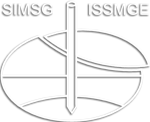Potential for Use of Recycled Waste Materials in Gravel Drains for Liquefaction Mitigation: A Review
Potential for Use of Recycled Waste Materials in Gravel Drains for Liquefaction Mitigation: A Review
Gravel drains are used as a liquefaction mitigation method that provides a shorter path for faster dissipation of excess porewater pressure generated during earthquake shaking. These drains are made of conventional aggregates such as crushed stone and gravel. This paper reviews the material characteristics of four different waste materials - recycled Construction & Demolition (C & D) waste (Recycled Concrete Aggregate - RCA type), recycled C & D waste (Mixed Recycled Aggregate - MRA type), Tyre-Derived Aggregates (TDA), and Bottom Ash (BA) from waste-to-energy (WtE) plants with an objective to assess their suitability as an alternative to natural aggregates (NA) in gravel drains. The data available from the literature reveals that RCA has properties satisfactory for its reuse in gravel drains. Further studies need to be conducted on MRA and TDA to understand the feasibility of their reuse in gravel drains. BA from WtE plants, owing to its gravel content of less than 30%, is unsuitable for gravel drain applications unless processed further.
S. Sarangi; R. Ayothiraman; Manoj Datta
9th International Congress on Environmental Geotechnics (ICEG2023)
Waste Reuse and Recycling
https://doi.org/10.53243/ICEG2023-421
